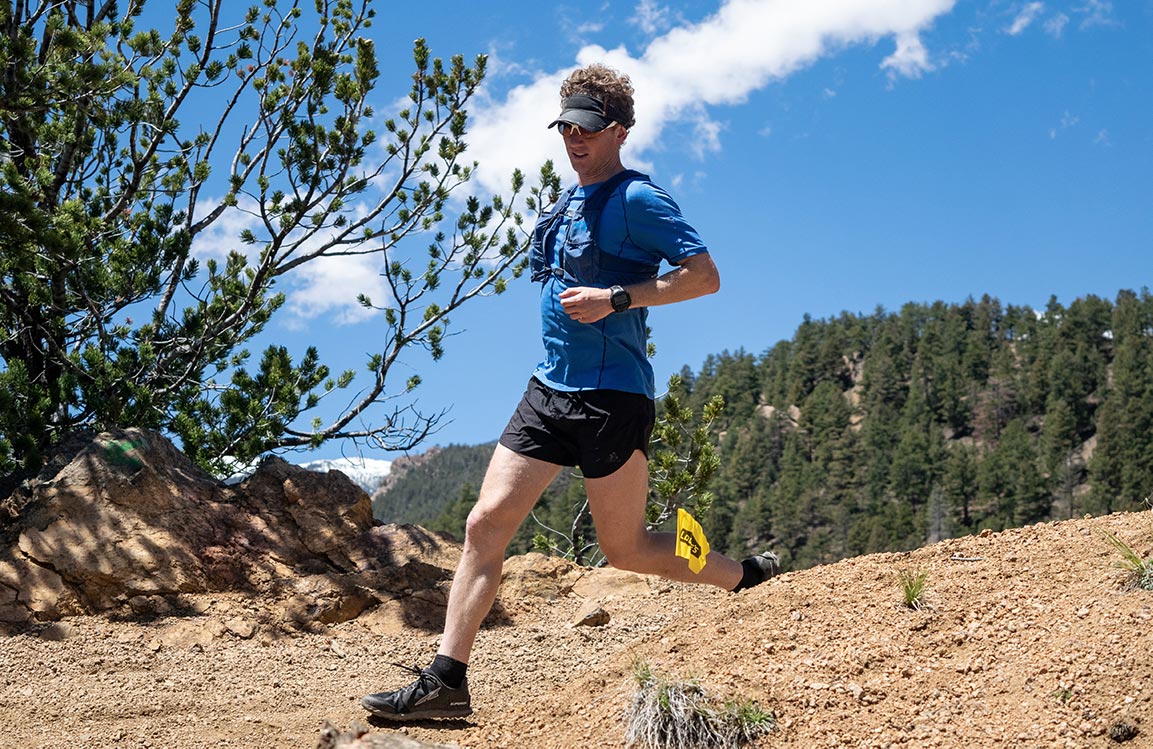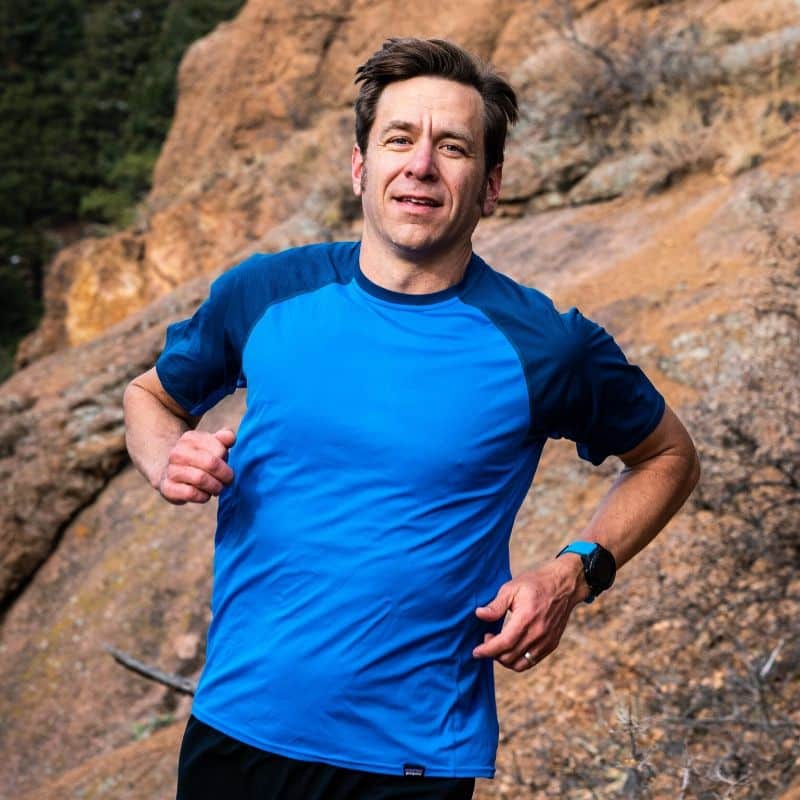
You Have Permission to Train (and do some other things, with some caveats)
By Jason Koop,
Head Coach of CTS Ultrarunning
Life these past few weeks has been full of restrictions. Some of us can no longer leave our homes except for the essentials. Most cannot eat at a restaurant, congregate in groups of more than 10, find toilet paper in the store, go to the movies or even hit the gym. I can’t even give my parents a hug. Some of these restrictions are mandated, others recommended and others still self-enforced (normally for good reason). We should all come to accept that the next several weeks, perhaps months, will be chock full of more and more restrictions on day-to-day life and activities. However, in our temporary new world of tightening constraints, I am giving you permission to do a few things that will improve your health, fitness and the community. You can thank me later.
(Author’s note- This article was published on March 24th. Recommendations and restrictions from the CDC, state and local authorities change rapidly. Please consult the CDC, your state or local government for any specific restrictions)
You have permission to train
‘Sheltering in place’ and maintaining an appropriate physical distance (the new and improved name for ‘social distance’) does not mean training has to come to a standstill. Currently, states and cities in the United States with ‘shelter in place’ ordinances are providing citizens some limited caveats. They include permission to leave your house for ‘essential’ and ‘outdoor’ activities, including training, given they ‘comply with Social (Physical) Distancing Protocols’. This is good news for you, and the public at large because time in the outdoors improves physical, mental and emotional health. So yes, you can still train with the following caveats.
Maintain your Physical Distance Protocols
‘Physical Distancing’ is the new ‘Social Distancing’. Honestly, the name is better and we should all adopt it. But, if we’ve learned anything in the last several days, don’t get used to it, it will change again. In any case, stay at least 6 feet away from anyone else on the trails or roads to minimize the chance of COVID-19 transmission. If you are finding that local trails, paths, or parks are busier than normal, consider changing the time you go out. Until or unless there are curfews, early mornings or evenings could be less busy.
Stay physically safe
Heath and emergency resources are now stretched to (and in some cases beyond) their limits. Now is not the time to set that FKT on the class 4/5 route you have been scheming on for months. Be reasonable with your route selection. Pick safe, benign trails with multiple bailout points where you can get yourself out should a minor ankle roll or fall happen. Now, more than ever, carry a phone, be self-reliant, and tell someone where you are going and when to expect you back.
What about my immunity?
This has been a hot topic of late and I am guessing your social media feed has been inundated with supplement companies claiming their magic formula will ‘boost’ your immunity to fight the COVID-19 virus (pro tip- you cannot ‘boost’ your immunity, only support it, so feel free to ignore all of these). As long as you train sensibly, your immunity system is going to be just fine. This means you have permission to do hard workouts so long as:
- you take the time to fuel properly during your run and
- Recover and hydrate afterward
Consistency is the key and now is not the time to purposely lose weight or even be concerned about weight, take on a new diet or skimp on your sleep. Actually, feel free to gain a few pounds. With a significant change in your routines and activity levels, some minor weight fluctuations are likely. Focus first on habits that support your health and wellbeing; if there are minor changes in weight as a result, let them happen and don’t stress about them.
While we used to think that immunity is compromised immediately after a hard or a long workout (aka the Open Window Theory), that theory has been challenged as of late. The ping pong match can briefly be summarized to say that rapid increases in training, dietary insufficiencies (acute and chronic), and inadequate sleep might compromise immunity more so than single bouts of hard or long exercise. So, feel free to keep up with your current training workload. If you really want to hedge your immunity bets, or if you are in a high-risk group, feel free to take 10% of your total training load off of the table (as a product of total time, time at intensity or some combination). It’s not going to hurt and I have done that with a number of my athletes more as a matter of long range planning (i.e., all of the short term races are cancelled) with perhaps a better supported immune system as the cherry on top.
Remember, life will eventually return to normal
This is hard to imagine now, but there is a light at the end of this tunnel. At present it is as dim as the faintest star in the galaxy. Gradually, this light will appear bigger and brighter until it is as luminescent as the sun we know today. This might take months, or even a year, but as long as we don’t colossally screw things up, life will be heavily constrained for a relatively short period and then gradually return to what we once knew. As the return to normalcy will be unbearably slow, athletes will have to consider when, and by how much, to ramp their training back up. During this time, the COIVD-19 will still be hanging around to some extent, meaning we and the population will still be vulnerable. If you’ve kept your fitness as-is, this will be no big deal. You’ll only need to add minimal amounts of time over several weeks, which will have zero impact on your immune system as well as be safe from an injury standpoint. But, if you reduce your overall volume in the short term by unnecessarily panicking that your immune system is going to be compromised, it’s going to be even more compromised as you cram in miles in an attempt to ramp your fitness back up. Thus, all the risk reduction you take on the front end of this journey will be completely undone, and your risks could be even higher on the back end. Remember that and play the long game here.
You have permission to meet up with a few of your training partners
The countries on complete lockdown aside, you have permission to meet up with a few of your regular training partners. What I have been doing locally is to meet my training partners mid-route somewhere. That way, we don’t drive (also good for the environment) and we’re not congregating at some parking lot. The social connection (with physical separation, of course) is good. It adds normalcy to this abnormal time. So, feel free to meet up with your regular running partners. Keep 6 feet away, and keep the snot rockets in their launch pads.
► Free Cycling Training Assessment Quiz
Take our free 2-minute quiz to discover how effective your training is and get recommendations for how you can improve.
► Free Ultrarunning Training Assessment Quiz
Take our free 2-minute quiz to discover how effective your training is and get recommendations for how you can improve.
To be crystal clear on this, runners should not be organizing their normal group runs. Gathering at the trail heads and clogging up the trails is simply selfish at this point. Stop doing it.
If you still want to maintain a social connection to your training partners, yet feel it is best to train solo for the time being, consider joining a Strava group, participate in a Zwift group run or one of the many virtual solo workout challenges (like iRunfar’s version here) or just simply hold a call while you and your training partner(s) run in completely separate areas.
You have permission to support your local businesses
OK, this isn’t training advice, necessarily, but keeping the community afloat during these times is going to be challenging. The impending shutdown of many sectors of the economy will threaten specialty running stores, races, local restaurants, and many other businesses that have long supported the endurance athletic community. I want these businesses to keep their doors open, and you should too. If you have the means, please buy from them and support them in any way you can. Personally, I made a list of all of the small business I know are going to get creamed and I want to support. I’m gradually buying their wares, gift cards, ordering delivery (for me and others) and shamelessly plugging them on my podcast for free (thanks to Billy Yang for that idea). You have permission to support them as well!
One of the keys to success in ultrarunning is finding a way to continue moving forward, despite adversity. That is going to be the key to success over the next several weeks and/or months, as well. Together, we will get through this and get back to running and racing and exploring the trails we love.
Be safe. Be well.
Enjoying This Article? Get More Free Running Training Tips
Get our coaches' best training advice, delivered straight to your inbox weekly.
► FREE Mini-Course: Learn How to Maximize Your Limited Training Time
Learn step-by-step how to overcome limited training time and get faster. Walk away with a personalized plan to increase your performance.
"*" indicates required fields


Comments 2
So much out there that it’s hard to know what to trust. The author of Good to Go, Christie Aschwanden, just published this: https://elemental.medium.com/this-is-the-exercise-your-body-needs-during-the-coronavirus-outbreak-8b924c92e861. In it says, “But more is not better. Last year, Nieman published a review that he says indicates “beyond a doubt” that engaging in sustained and prolonged high-intensity exercise (think a long, hard run or multihour endurance event) provokes an increase in stress hormones, inflammation, and oxidative stress. Usually this effect is transient, and you can “snap back and carry on,” he says. But some people are more susceptible to that stress than others, and if you’re under mental or emotional stress, eating poorly, or not sleeping enough, you will become even more vulnerable.”
I appreciate your articles and the amount of thought put into to them. Thank you!
Jason, can you comment on the recent article in Cycling News that suggests that the virus may remain “in the air” for hours and therefore outdoor training is to avoided even with “distancing”?
https://www.cyclingnews.com/features/commentary-why-its-better-not-to-ride-together-in-the-time-of-coronavirus/